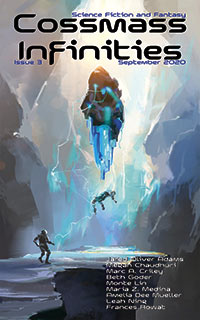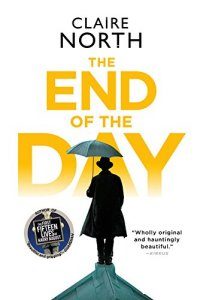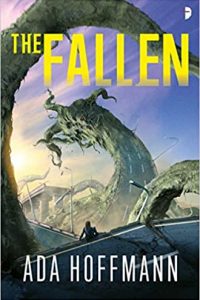Rich Horton Reviews Short Fiction: Curiosities, Cossmass Infinities, On Spec, Analog, and Asimov’s
 Curiosities Winter ’20
Curiosities Winter ’20
Cossmass Infinities 9/20
On Spec #115
Analog 3-4/21
Asimov’s 3-4/21
It is always a surprise – unfairly so – to find a small new magazine and realize that it’s really quite good! I had that experience with the previous issue of Curiosities, and now I see the Winter issue, and it does not disappoint.
Konstantine Paradias offers “And the Faces Screamed in the Galleries” – a really striking, surrealist story. The paintings in the Louvre have come to life and are attacking humans. This is a case for… the Astrolabe! It’s a wild story that has a lot of fun with its premise and has some philosophical points to make too.
“Six Coins” by Liam Hogan is the tale of a journey to the rim of the world led by famous explorer Sir Richard Dornford. The narrator is his young apprentice, Alex. It seems their world is literally bowl-shaped, and Dornford’s plan is to sail over the rim, for he believes there is more territory on the outside of the bowl. This is fun old-fashioned adventure, with a nicely turned closing surprise.
Cossmass Infinities is completely new to me. The September 2020 issue, its third, is the first I’ve seen and it’s pretty solid throughout. “The Line in the Sky” by Maria Z. Medina is told by a young woman who misses her boyfriend, who applied for an exchange program to an alien world and actually was accepted. The narrator plans to make her way there too… but then things change. It’s quite sweet, really. “Memento Amicum” by Marc A. Criley reminded me of John Crowley’s great story “Snow”, in telling of slowly decaying mementas – AIs made from the memories of the deceased and hosted in cemeteries. It’s told by a maintenance man at one cemetery, who faithfully cares for the mementas, even as their descendants stop coming and as new technologies – and lack of money – lead inevitably to more decay.
I should also mention a not-so-new small magazine, On Spec. The current issue is their 115th, which is pretty good any way you look at it. My favorite here is “The First Woe” by Virginia Elizabeth Hayes. It’s set during an “Eventful Singles” Tour. Two of the singles, PJ and Zeke, each of whom maybe has a few miles on their treads, start to talk and make fun of the woman leading the Tour and her rules… until they notice some mysterious things… Latin, and numbers, and they remember something about the history of the place they’re touring. They soon gather that the tour leader has other plans than teaching the group how to hook up. A nice, fun little piece, and I wouldn’t mind reading about the second and third woes (though I’m not saying the story didn’t end properly.)
On to a couple of the better-known magazines in the field. “The Shadow of His Wings” is the first appearance in Analog for Ray Nayler, who is already familiar to readers of Asimov’s (and other magazines). Bashim is a Turkmen boy who is serving as a wallah – helping guide a group of thrill-seeking sheikhs as they hunt in the Kara-Kum Desert. That night, after an obscure warning from his brother, he and his AI teaching device are away from camp when raiders appear, and Bashim is soon fleeing, with the help of the teaching device, which it turns out has been taken over by the falcon accompanying him…. There’s some cool SFnal speculation here, but at its heart is a sad, dark meditation on class and privilege and small-scale realpolitik.
Another strong short story comes from Matthew Claxton. “The Acheulean Gift” concerns a group of children who were genetically modified to have “Acheulean” genes – genes from ancient man. That has led, predictably, to violent prejudice – and, also predictably, it didn’t quite work perfectly. Jo is a nearly teenaged girl, being raised by her (non-Acheulean) brother, and she and some of her fellows are at a summer camp which is threatened by terrorists. Her special “gifts” prove a way to defend herself – and also suggest something perhaps a bit darker. I didn’t quite buy all this – the idea that being able to knap flint to make a stone axe is a genetically carried talent seems frankly Lamarckian to me – but it’s a well-done and thought-provoking piece.
I really liked “Tail Call Optimization” by Tony Ballantyne, which I suppose, in a very different way, is also about class and privilege and small-scale realpolitik. The POV character is a low-status Finn, an alien robot of the BoboboCedian race. This Finn is a salvager in a group of Finns, looking for tech from the vanished Hephaestans on an asteroid. The POV Finn has a faulty scavenged body, and a processor messed up by a sort of Fibonacci virus. And then ve (the pronoun the BoboboCedians use) realizes ve has found another processor unit – and that unit has an intelligence in it. Of course ve decides to erase this intelligence and scavenge the processor – but that intelligence – which turns out to be a human woman’s – convinces ve to let her remain, and to help her try to escape. In exchange, the human makes some improvements to the Finn’s processing… and before long the two of them realize something quite unexpected about this Finn’s actual nature. Ballantyne’s far-future speculation is as always scintillating, especially concerning AI… and the story finds a not entirely conventional resolution.
The latest issue of Asimov’s features two strong novellas. Alex Irvine‘s “Glitch” is a tense near-future thriller. Kyle wakes up in a hospital – his fiancée Shari is there, but she and the medical professionals are acting strangely – and soon realizes he’s been “resurrected” from a backup. He died in a bombing by a white supremacist, an issue that’s only gotten worse in this climate change-wracked future. What’s worse is that his backup was corrupted, and he soon realizes that the corrupted data is memories from the bomber. This gets complicated quickly: Kyle is white, Shari is Black, and the bomber’s personality is trying to take over, and it’s an ugly personality. One way out would be to use the bomber’s memories to help identify him, but unfortunately admitting that the bomber is now part of his consciousness would just get him arrested, because (and this I found hard to believe) hosting, even unwillingly, a terrorist’s brain state makes yo u guilty of his crimes. Anyway – as you can see, this all gets pretty tangled, perhaps a bit TOO tangled. Kyle is pushed to get help from underground actors and then to try desperately to stop another bombing. This is really exciting stuff and has some cool ideas, and though I thought it came just short of fully working, it’s still neat neat.
Greg Egan‘s “Light Up the Clouds” is really cool new-fashioned old-fashioned SF set in a habitat that reminded me of Larry Niven’s The Integral Trees. Tirell is a young man living in a floating forest orbiting a dim “Near Sun,” and a lot farther away from the “Far Sun.” His people live a simple-seeming life in these trees, but they remember dimly the “cousins” who left long ago. Tirell has become involved with a group of people who launch a glider into the clouds, hoping for better sightings of the “Far Sun” and even the stars. And now they have discovered a new group of “asteroids” that don’t act like asteroids, they decide these are the cousins, returned in some sort of space vehicles. But how to contact the cousins? Soon Tirell and his fellows are designing an advanced glider to launch to the supposed ships of the cousins…. This is fun stuff – very much the sort of thing one might have read in the ’70s, or even the ’50s (including the extremely optimistic view of how fast an engineering project such as that shown here can advance) – but there’s also a darker underside here.
Felicity Shoulders‘s novelette “Somebody’s Child” is intriguing work. Irene McFadden is a young woman acting as a “kanga” – slang for a sort of surrogate mother of a child whose gestation was “suspended.” Her daughter Frances (slangily, a “roo”) is the child of a girl who died in an accident – and now her parents (Frances’s grandparents) are trying to claim a role in her life. So far, so intriguing… and this is complicated further because this is an alternate present – that is, this “suspension” technology has been around since the ’90s at least, and there are other changes – Mitt Romney became President, for example. Then the story pivots – it turns out Frances’s grandparents aren’t related to her so who is her mother, really? I have to admit I found the answer to this not very interesting, and kind of off – overegging the pudding, maybe. I thought the story never really sold the political aspects of the opposition to the program, and the way that became hate of the “kangas” and “roos.” What worked was, mostly, Irene’s personal story, which is involving throughout, and the central idea is interesting, too – perhaps at a few thousand more words it would work even better.
The short stories in this issue are a varied and pretty strong lot. James Patrick Kelly‘s “Grandpa +5C” is a sneakily dark story about a young woman in a climate-ravaged future whose Great Grandmother has returned – but boomers like her are the villains that messed up the world! Kali Wallace‘s “Mrs. Piper Between the Sea and the Sky” is a scary story about a woman in a world in which particularly evil aliens invaded during WWII who is tasked with kidnapping Mrs. Piper’s husband – a traitor. “Flowers Like Needles” by Derek Künsken, portrays a fascinating landscape around a neutron star and an alien struggling to come to philosophical terms with an alternate way of life. Perhaps the best of these is A.T. Greenblatt‘s “RE: Bubble 476“, an epistolary story of two close friends (roommates and perhaps (?) lovers) who have each taken positions in “bubble universes.” The story is for a while (forgive me) “bubbly,” but things get fraught when it becomes clear these universes are not stable. Sweet and interesting and scary, at the same time.
Recommended Stories
“Tail Call Optimization”, Tony Ballantyne (Analog 3-4/21)
“Memento Amicum”, Marc A. Criley (Cossmass Infinities 9/20)
“Light Up the Clouds”, Greg Egan (Asimov’s 3-4/21)
“RE: Bubble 476”, A.T. Greenblatt (Asimov’s 3-4/21)
“The First Woe”, Virginia Elizabeth Hayes (On Spec #115)
“Six Coins”, Liam Hogan (Curiosities Winter ’20)
“Glitch”, Alex Irvine (Asimov’s 3-4/21)
“The Shadow of His Wings”, Ray Nayler (Analog 3-4/21)
“And the Faces Screamed in the Galleries”, Konstantine Paradias (Curiosities Winter ’20)
Rich Horton works for a major aerospace company in St. Louis MO. He has published over a dozen anthologies, including the yearly series The Year’s Best Science Fiction and Fantasy from Prime Books, and he is the Reprint Editor for Lightspeed Magazine. He contributes articles and reviews on SF and SF history to numerous publications.
This review and more like it in the April 2021 issue of Locus.
 While you are here, please take a moment to support Locus with a one-time or recurring donation. We rely on reader donations to keep the magazine and site going, and would like to keep the site paywall free, but WE NEED YOUR FINANCIAL SUPPORT to continue quality coverage of the science fiction and fantasy field.
While you are here, please take a moment to support Locus with a one-time or recurring donation. We rely on reader donations to keep the magazine and site going, and would like to keep the site paywall free, but WE NEED YOUR FINANCIAL SUPPORT to continue quality coverage of the science fiction and fantasy field.
©Locus Magazine. Copyrighted material may not be republished without permission of LSFF.







